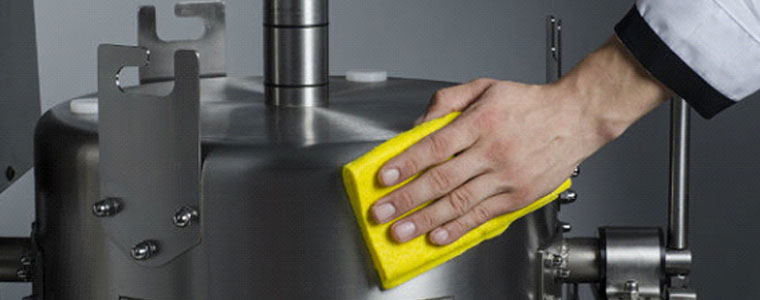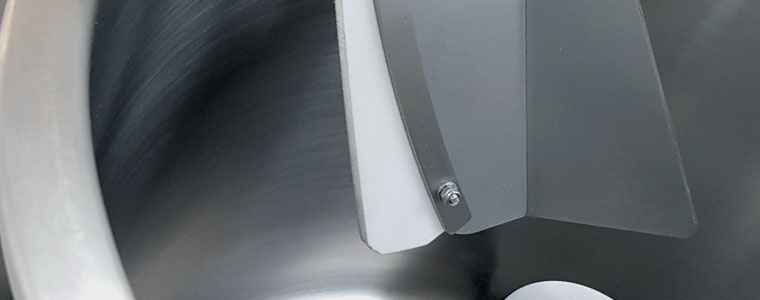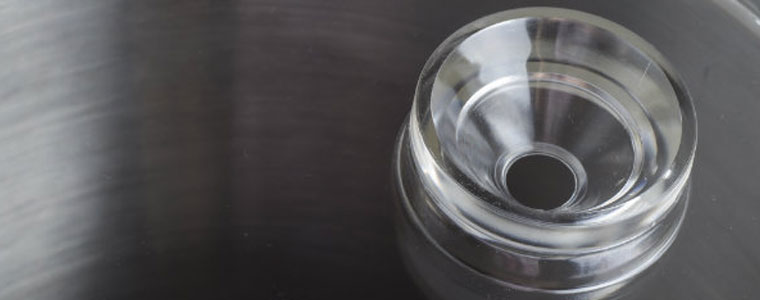
The very first electronic food processor was designed way back in 1946 by the German company Electrostar, but modern food cutter processors truly took shape in the 1960s thanks to the innovation of a French catering equipment salesman, Pierre Verdun.
Verdun came up with the idea for a streamlined, easy to use food processor after observing just how much time it took his clients to slice and dice vegetables, mix ingredients and blend sauces and dips.
This design, a giant bowl with an electronic revolving blade to chop and mix food at the base, has remained fundamentally unchanged in the years since, though innovations in technology (such as induction motors) have dramatically improved performance and output.
These improvements take the form of a variety of features that might be difficult to decipher if you don't know what you're looking for. To determine which cutter processor is the best fit for your business, there are eight main things you should take into consideration. They are:

1. Power
Basic cutting or chopping doesn't require too much power, but if you're processing more robust ingredients you'll need a processor with the power required to handle these tougher jobs. Broadly speaking, the more wattage a cutter processor has, the quicker it will be able to cut, mix and blend too, so if you've got high production needs you'll want to source a machine that can handle more demanding workloads.

2. Controls
Many commercial cutter processors are limited to a simple 'on/off' operation. This might work fine if you only need to process one type of food, or your requirements are quite limited, but for more flexible operation look for a cutter that features variable speed control. Another option that is excluded from most food processors is a reverse mode. This is particularly useful if you want to mix ingredients without cutting, giving you even more control over the finished product.

3. Blades
Look at almost any commercial cutter processor on the market and you'll notice they use a two pronged blade in the bottom of the unit to chop and mix. This is pretty much the industry standard configuration, but if you're looking for even more efficient cutting, consider a Yazicilar cutter with its patented four blade design. These additional blades ensure product is evenly processed without overheating or spoiling. Various blade styles are available to suit the product you're cutting and mixing.

4. Warranty
Standard warranties on commercial catering equipment rarely extend beyond two years. While this might sound reasonable, it does leave you liable for any servicing or repairs that might be needed outside of this time frame. Further, by providing a one or two year warranty, the manufacturer is basically telling you that's how long they expect the unit to last. The Good Lady offers an unmatched four year warranty on all of our products, giving you peace of mind that your equipment won't break down one year and one day after you purchase it.

5. Construction
Processing heavy loads can cause strong vibrations so stability is an important factor when it comes to choosing a food processor. Look for a cutter processor that has a solidly built body and wide base to prevent the unit from moving while in operation. A wider base will spread the force of of the motor's rotation across a wider area, enhancing stability and ensuring user safety.
A cutter manufactured entirely from stainless steel is ideal for heavy duty commercial and industrial use. With no plastic parts, it's easy to clean too.

6. Scraper Attachment
One problem often associated with cutting and mixing thicker ingredients is that they tend to stick to the sides of the processor, requiring the operator to stop the machine, open the lid, scrape down the sides and then seal everything up before continuing to mix. A cutter processor with a scraper attachment eliminates this issue, cleaning the bowl while you work and ensuring ingredients are homogeneously mixed throughout the blending cycle.

7. Bowl Capacity & Tilt
Selecting the right size cutter processor depends on the amount of product you need to mix. Generally speaking, freestanding cutters are available in sizes ranging from 20 up to 65 litres. If you know you're going to need an even higher capacity unit for regular processing, Yazicilar manufactures a 120 litre cutter processor, though in many cases you might find two 65 litre models will work just as well. This configuration also provides you with the flexibility to operate only one when processing requirements are reduced.
A tilting bowl is another useful feature on a food cutter, as it allows you to easily tilt the machine horizontally to dispense your end product once it's done. Always ensure you select a model with a removable bowl too, as this allows you to easily remove parts for thorough, hygienic cleaning.

8. Adding Additional Ingredients
A scraper attachment assists in cleaning the bowl while you mix, but what if you need to add more ingredients during processing? Choose a food cutter with a feeding hole recessed in the lid so that you add ingredients like oil or other liquids at any time.
If you're spending a substantial amount of time manually chopping, cutting or mixing raw ingredients, it makes sense to invest in a commercial food cutter processor. Yazicilar cutter processors have been engineered with all the features listed above, so if you're considering which brand to buy take a look at the range by clicking the link below.

